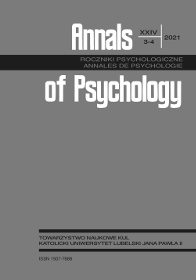Reimagining Imagia. Neurocognitive Theory of Image Revisited With the Consciousness Studies Perspective
Reimagining Imagia. Neurocognitive Theory of Image Revisited With the Consciousness Studies Perspective
Author(s): Michał WierzchońSubject(s): Social Sciences, Psychology, Personality Psychology
Published by: Towarzystwo Naukowe KUL & Katolicki Uniwersytet Lubelski Jana Pawła II
Keywords: image; theory of image; neuroesthetics; art experience; consciousness
Summary/Abstract: Imagia. Towards a neurocognitive theory of image (Francuz, 2013) defines art perception as a synthesis between acts of perception and visual imagination limited by attentional constraints. The majority of empirical evidence the author referred to in the book focuses on visual processing, attention, and aesthetic judgements. Nevertheless, other mechanisms involved in the subjective experience formation undoubtedly also plays a role in the perception of art. Thus, it seems worth complementing the fundaments of the neurocognitive theory of image with consciousness literature. The research in this domain often reminds us that we see much more than is presented. Our conscious perception is modified, extended, and enriched due to multiple mechanisms, such as prediction, integration, or learning. Here, I review selected examples of work from the consciousness literature to illustrate this claim. Furthermore, I discuss this work in the context of art perception. Finally, I reconstruct the model proposed by Francuz and offer its extension that accounts for the aspects covered by the original work and those addressed in this paper.
Journal: Roczniki Psychologiczne
- Issue Year: 24/2021
- Issue No: 3-4
- Page Range: 383-392
- Page Count: 10
- Language: English

